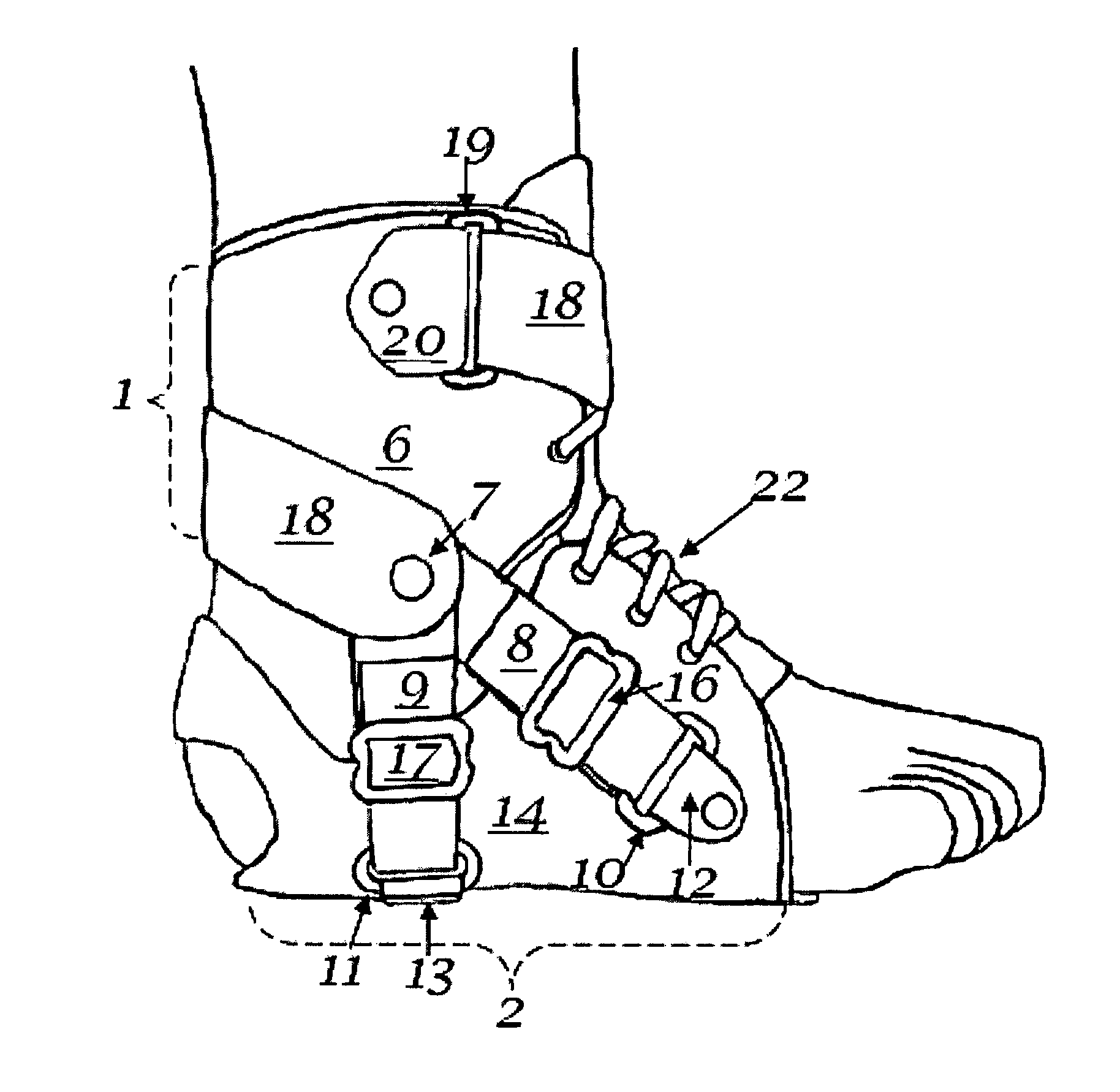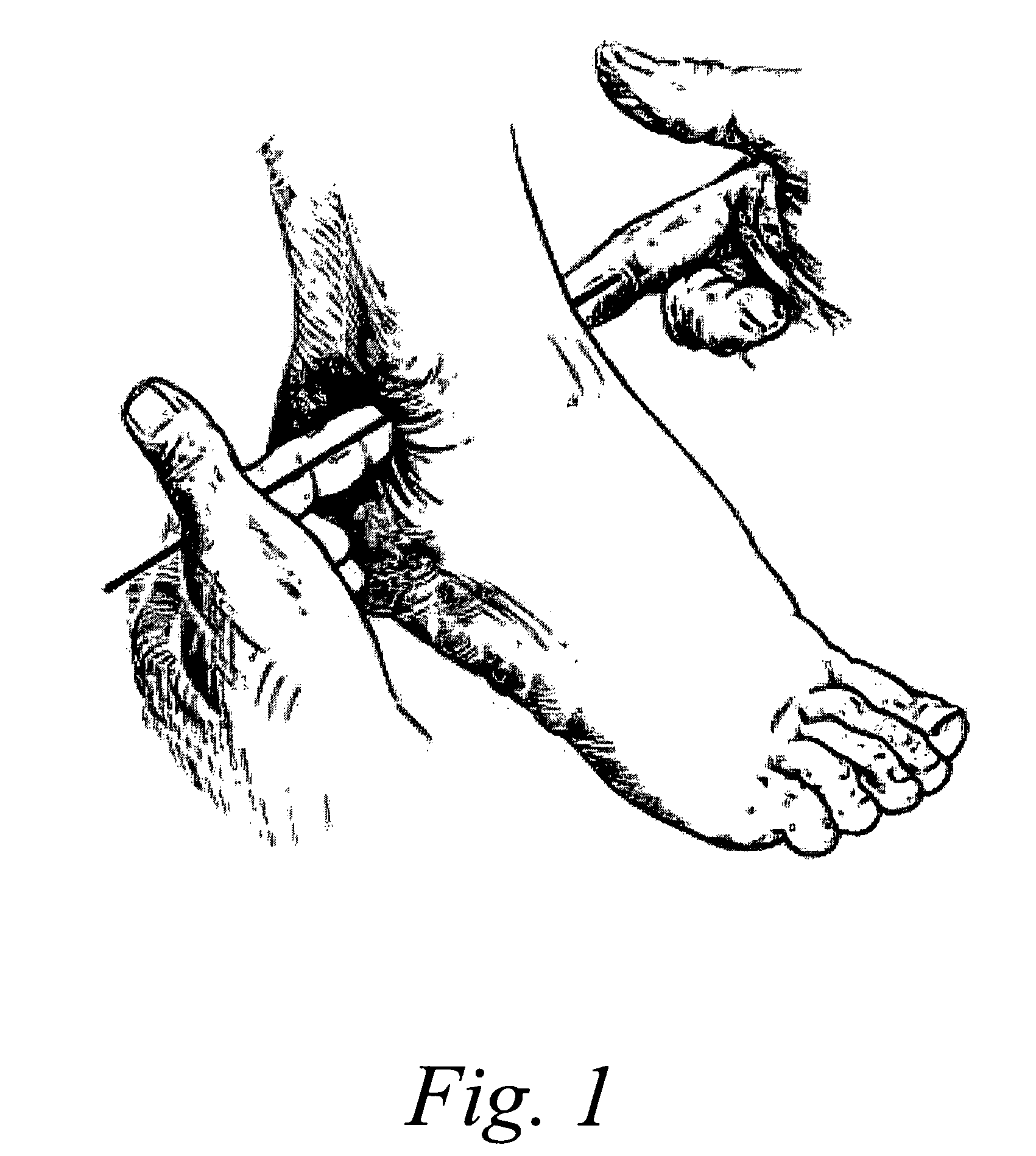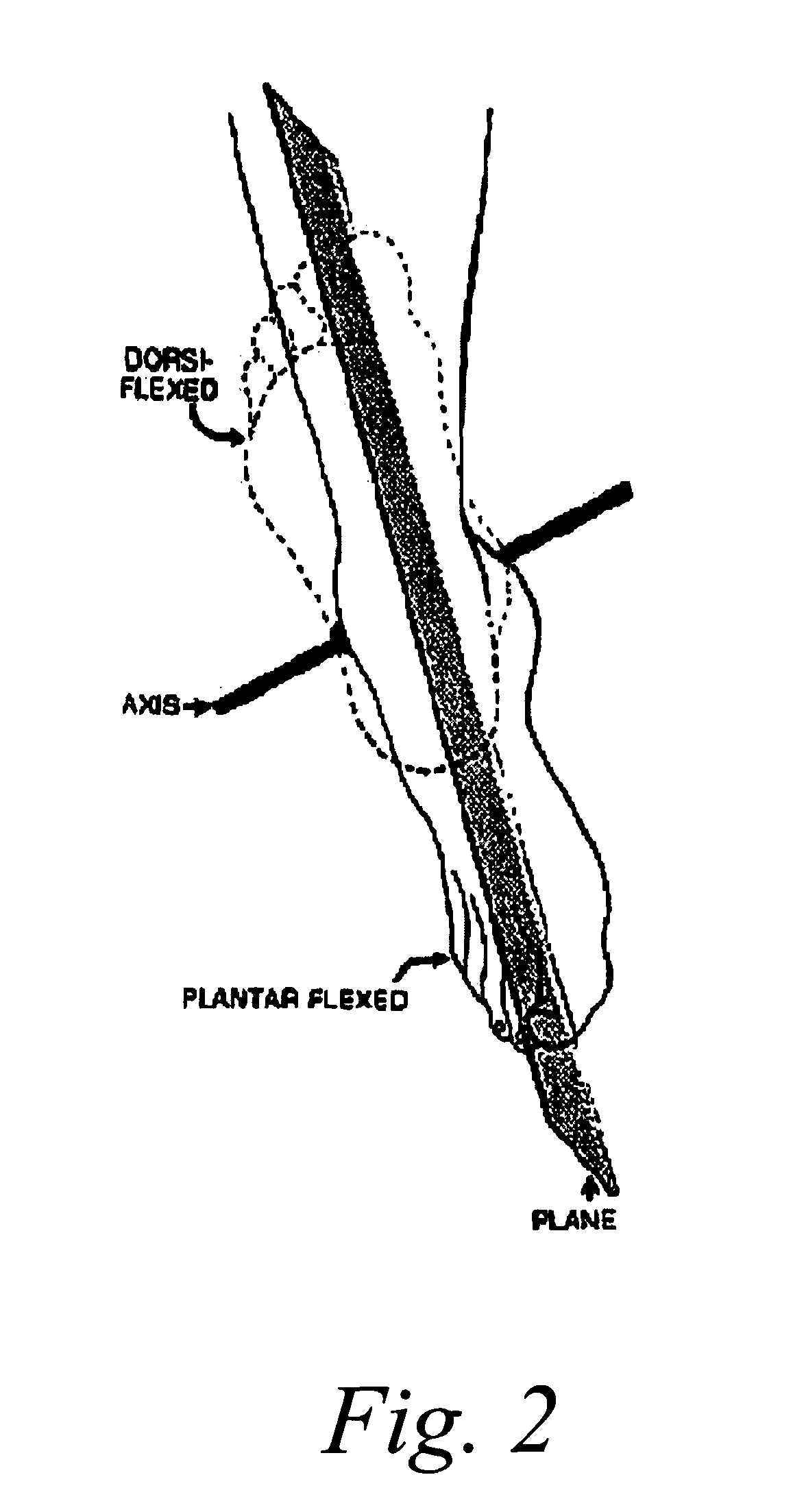Ankle derotation and subtalar stabilization orthosis
a subtalar stabilization and derotation technology, applied in the field ofankle derotation and subtalar stabilization orthosis, can solve the problems of abnormal rotary mobility within the tcj, transfer of torque to the leg, and extremely complex interrelationships of the ankle, and achieve the effect of restricting the inversion and translatory movement of the foo
- Summary
- Abstract
- Description
- Claims
- Application Information
AI Technical Summary
Benefits of technology
Problems solved by technology
Method used
Image
Examples
Embodiment Construction
[0036]None of the prior art has disclosed an adjustable-tension tether strap that is anchored to the forefoot portion of a foot cuff / orthotic component, that pivots in a manner to permit normal upward and downward movement of the foot, and that is contiguous with a adjustable-tension derotation strap that wraps behind the leg and anchors to a leg cuff component. Because the major portion of forefoot motion results from rotation around the functional axis of the STJ, optimal resistance to excessive forefoot motion can be accomplished through a design that generates tensile resistance in a plane that is perpendicular to that of the STJ axis. Such a system requires moveable elements for the following reasons: 1) plantar flexion and dorsiflexion would be greatly limited by a non-elastic or non-articulated device that connects the leg and the forefoot, and 2) the orientation of the subtalar axis changes when the foot is dorsiflexed and plantar flexed.
[0037]The present invention is an ank...
PUM
 Login to View More
Login to View More Abstract
Description
Claims
Application Information
 Login to View More
Login to View More - R&D
- Intellectual Property
- Life Sciences
- Materials
- Tech Scout
- Unparalleled Data Quality
- Higher Quality Content
- 60% Fewer Hallucinations
Browse by: Latest US Patents, China's latest patents, Technical Efficacy Thesaurus, Application Domain, Technology Topic, Popular Technical Reports.
© 2025 PatSnap. All rights reserved.Legal|Privacy policy|Modern Slavery Act Transparency Statement|Sitemap|About US| Contact US: help@patsnap.com



